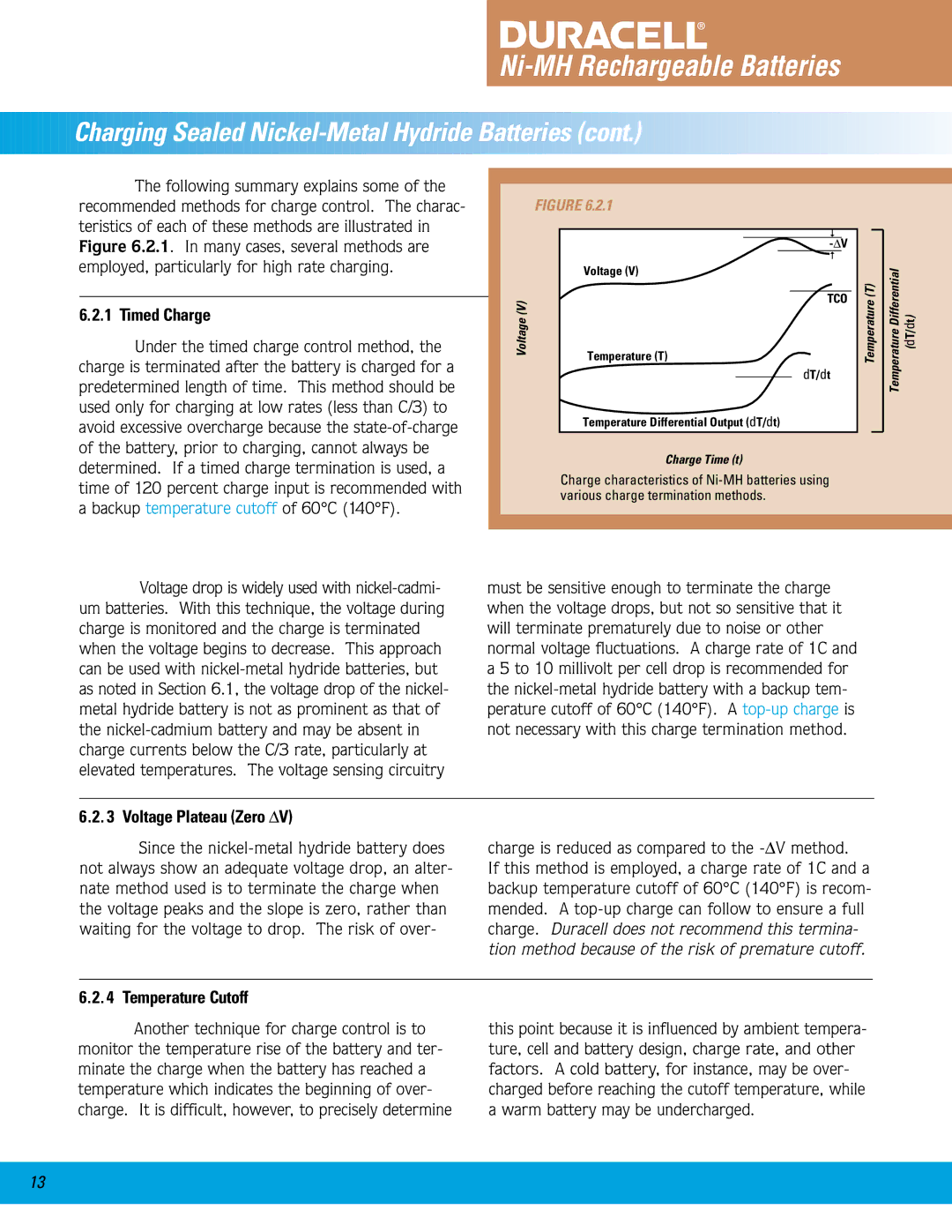
Ni-MH Rechargeable Batteries







 Charging
Charging
 Sealed
Sealed Nickel-Metal
Nickel-Metal Hydride
Hydride Batt
Batt eries
eries (co
(co
 nt.)
nt.)































The following summary explains some of the recommended methods for charge control. The charac- teristics of each of these methods are illustrated in Figure 6.2.1. In many cases, several methods are employed, particularly for high rate charging.
6.2.1 Timed Charge
Under the timed charge control method, the charge is terminated after the battery is charged for a predetermined length of time. This method should be used only for charging at low rates (less than C/3) to avoid excessive overcharge because the
Voltage drop is widely used with
6.2. 3 Voltage Plateau (Zero ΔV)
Since the
FIGURE 6.2.1
|
|
|
|
|
|
|
| V |
|
|
| |
|
|
|
|
|
|
|
|
| ||||
| Voltage (V) |
|
|
|
|
|
|
| DifferentialTemperature )tT/(dd | |||
|
|
|
|
|
|
|
| |||||
(V)Voltage |
|
|
|
|
|
|
|
|
| Temperature(T) | ||
|
|
|
|
| TCO | |||||||
|
|
|
|
|
|
|
|
| ||||
| Temperature (T) |
|
|
|
|
|
|
|
| |||
|
|
|
|
|
| dT/dt |
|
|
| |||
| Temperature Differential Output (dT/dt) |
|
|
|
| |||||||
|
|
|
|
|
|
|
|
| ||||
|
|
|
|
|
|
|
|
|
|
|
|
|
Charge Time (t)
Charge characteristics of
must be sensitive enough to terminate the charge when the voltage drops, but not so sensitive that it will terminate prematurely due to noise or other normal voltage fluctuations. A charge rate of 1C and a 5 to 10 millivolt per cell drop is recommended for the
charge is reduced as compared to the
If this method is employed, a charge rate of 1C and a backup temperature cutoff of 60°C (140°F) is recom- mended. A
6.2. 4 Temperature Cutoff
Another technique for charge control is to monitor the temperature rise of the battery and ter- minate the charge when the battery has reached a temperature which indicates the beginning of over- charge. It is difficult, however, to precisely determine
this point because it is influenced by ambient tempera- ture, cell and battery design, charge rate, and other factors. A cold battery, for instance, may be over- charged before reaching the cutoff temperature, while a warm battery may be undercharged.
13
